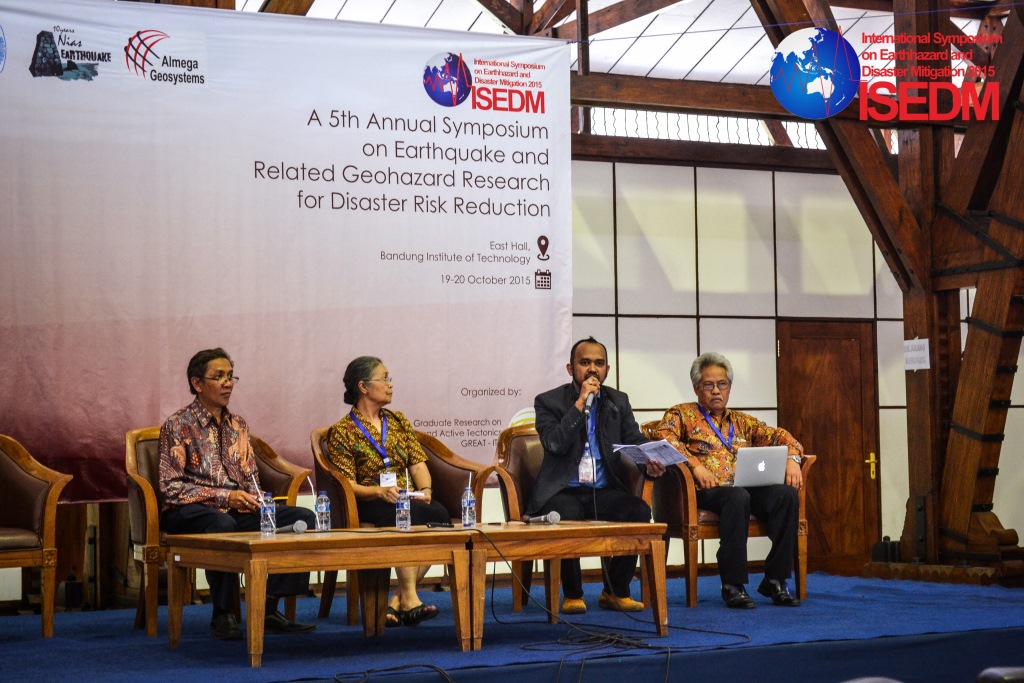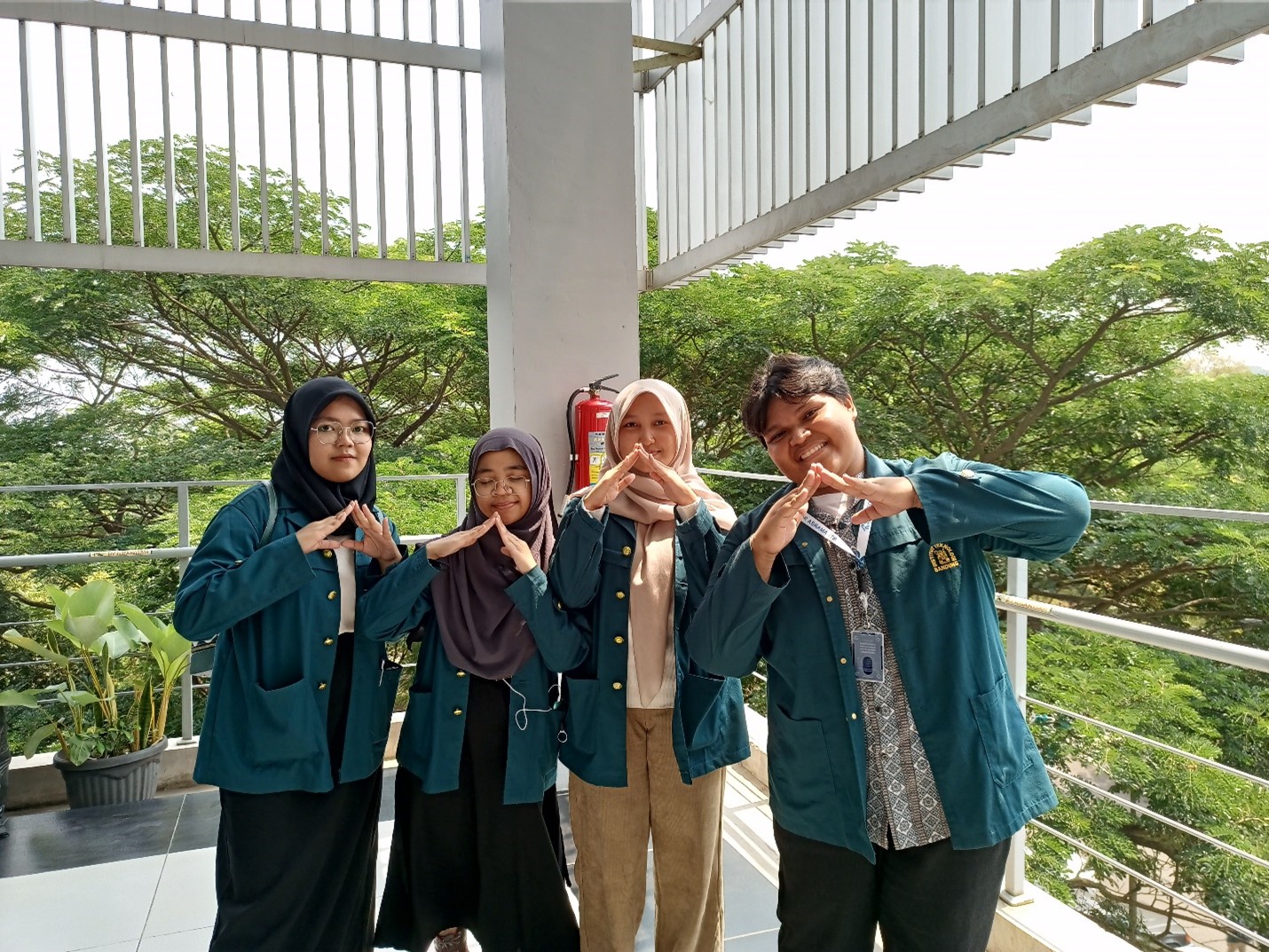ISEDM 2015: Science Contribution to Reduce Earthquake Risks
By Yasmin Aruni
Editor Yasmin Aruni

 BANDUNG, itb.ac.id - Graduate Program Research on Earthquake and Active Tectonics ITB (GREAT-ITB) in collaboration with the National Disaster Management Agency (BNPB) held the 5th International Symposium on Earthhazards and Disaster Mitigation on Tuesday-Wednesday (19- 20/10/2015) at ITB East Hall. Annual scientific meeting is a major forum for researchers and academics from different disciplines who have an interest in earth sciences and disaster mitigation. In ISEDM, they gather to presentate research results orally or through posters and disseminate to fellow academics and public.
BANDUNG, itb.ac.id - Graduate Program Research on Earthquake and Active Tectonics ITB (GREAT-ITB) in collaboration with the National Disaster Management Agency (BNPB) held the 5th International Symposium on Earthhazards and Disaster Mitigation on Tuesday-Wednesday (19- 20/10/2015) at ITB East Hall. Annual scientific meeting is a major forum for researchers and academics from different disciplines who have an interest in earth sciences and disaster mitigation. In ISEDM, they gather to presentate research results orally or through posters and disseminate to fellow academics and public.  FITB's ISEDM 2015 was opened by the Dean, Prof. Hasanuddin Z. Abidin and Head of Engineering Department of Geophysics, Dr. Andri Dian Nugraha as Vice Chairman of the Committee. This year's ISEDM 2015, which coincided with a decade of Nias earthquake successfully received as many as 88 research papers. Topics of papers, among others, with respect to the Earthquake Geology, Tectonics Geodesy, Seismology Earthquake, Seismic Disaster and Earthquake Engineering, Marine and Tsunami Disaster, Landslide, Hydrometeorology Disaster, Geospatial Analysis for Disaster Management and Risk Reduction Earthquake by the Community. This event brings together more than 30 speakers from various agencies both inside and outside the country such as the Indonesian Institute of Sciences (LIPI), Badang Assessment and Application of Technology (BPPT), the Meteorology, Climatology and Geophysics (BMKG), Australian National University (ANU ), Institut de Recherche pour le Development, Nagoya University and others. Aside from professional agencies, speakers filled by students from ITB, Padjadjaran University, the University of Gadjah Mada, Hasanuddin University, and various universities in Indonesia.
FITB's ISEDM 2015 was opened by the Dean, Prof. Hasanuddin Z. Abidin and Head of Engineering Department of Geophysics, Dr. Andri Dian Nugraha as Vice Chairman of the Committee. This year's ISEDM 2015, which coincided with a decade of Nias earthquake successfully received as many as 88 research papers. Topics of papers, among others, with respect to the Earthquake Geology, Tectonics Geodesy, Seismology Earthquake, Seismic Disaster and Earthquake Engineering, Marine and Tsunami Disaster, Landslide, Hydrometeorology Disaster, Geospatial Analysis for Disaster Management and Risk Reduction Earthquake by the Community. This event brings together more than 30 speakers from various agencies both inside and outside the country such as the Indonesian Institute of Sciences (LIPI), Badang Assessment and Application of Technology (BPPT), the Meteorology, Climatology and Geophysics (BMKG), Australian National University (ANU ), Institut de Recherche pour le Development, Nagoya University and others. Aside from professional agencies, speakers filled by students from ITB, Padjadjaran University, the University of Gadjah Mada, Hasanuddin University, and various universities in Indonesia.
Indonesia, State Plant Earthquake
The symposium is open to the public, and expected to sensitize the public to the earthquake disaster. Because the position of Indonesia which geologically is a meeting place of world's four major plates make our home as a productive "earthquake-producing factory". With a variety of earth science published, the public may be aware that Indonesia is an earthquake-prone areas so that society understands and supports disaster mitigation efforts in order to minimize catastrophic effects. In addition, research conducted at the epicenter is comparatively slight. "We need to peel a lot of things about Indonesia's tectonics. Hopefully, ISEDM can inspire students to learn more about the geology of the earthquake," said Dr. Andri.
Photo: ISEDM 2015, ga.gov.au

.jpg)
.jpg)
.png)
.jpg)
.jpg)

